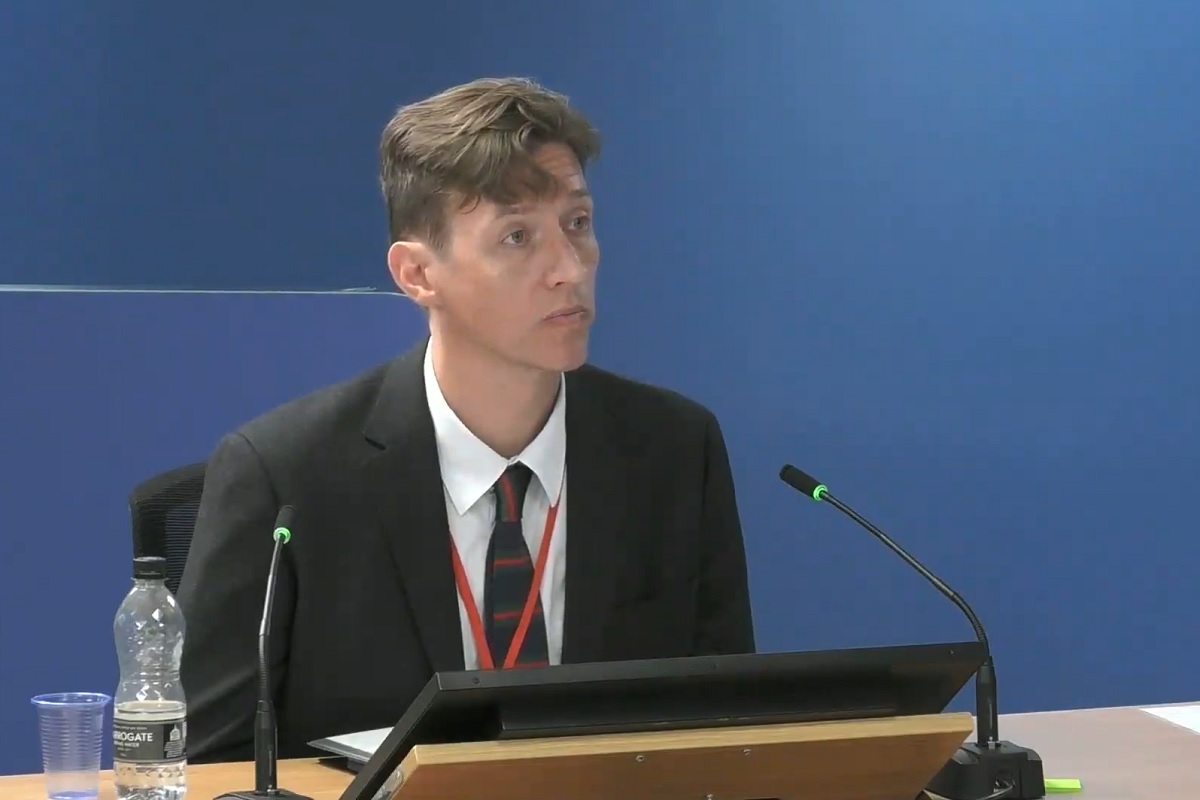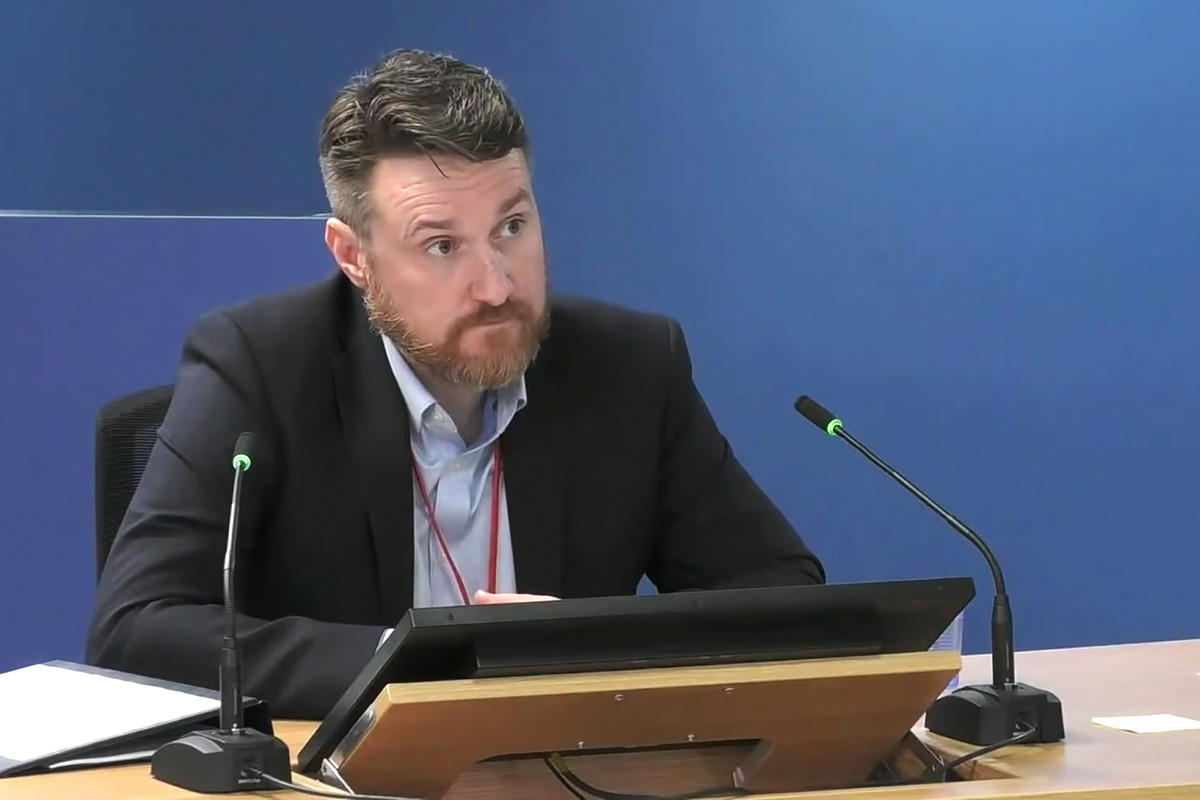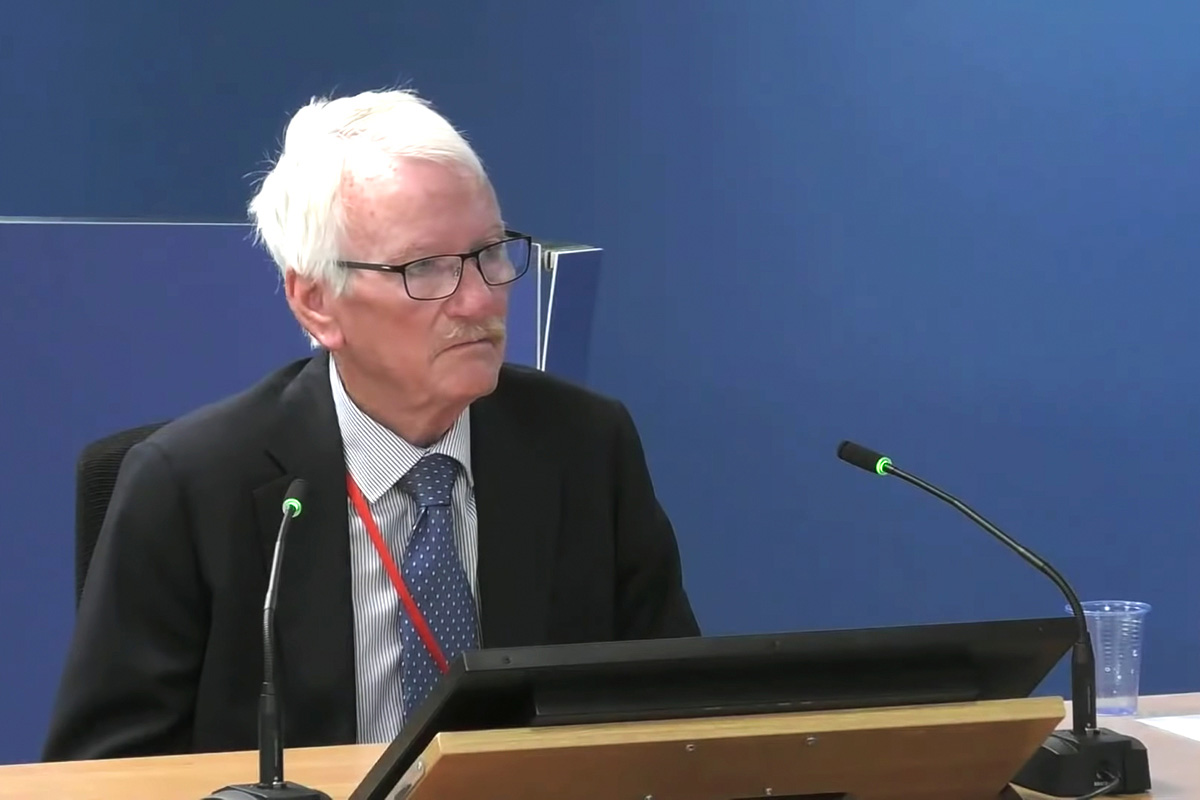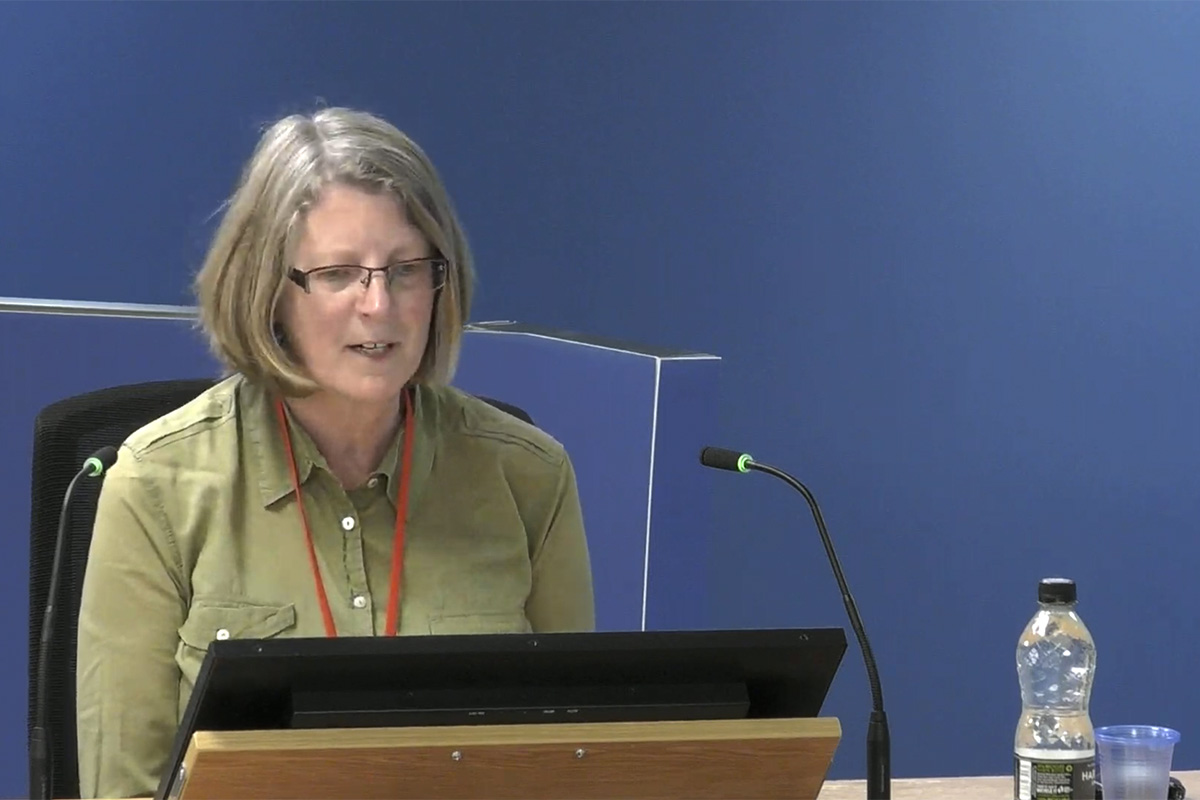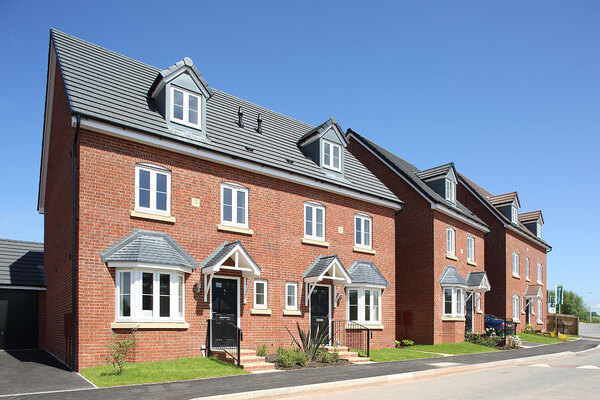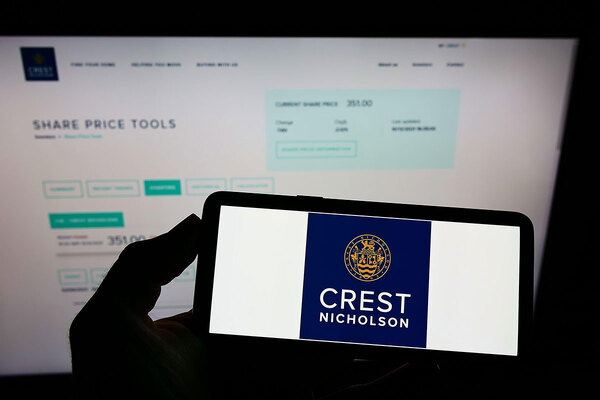Grenfell Tower Inquiry recap: module one – the refurbishment
As the Grenfell Tower Inquiry prepares to return for closing statements, Peter Apps recaps some of the evidence relating to the parties involved in the refurbishment of the building
Evidence covering the refurbishment of Grenfell Tower ran from January 2020 to October 2020, which also included a lengthy break caused by the first coronavirus lockdown.
As the various players involved prepare to return to give overarching closing statements, here is a recap of the evidence revealed.
Studio E
Its role: The architects that designed the refurbishment, including specifying the cladding system.
What we learned: Studio E had already been engaged to design a school and leisure centre project at the base of the tower and the refurbishment of the block was effectively an “add-on”.
The firm won the job without an open procurement process, after their fee was deliberately split in order to avoid breaching the threshold.
It had no major experience of high rises and its lead architect, Bruce Sounes (pictured above), was carrying out his first residential cladding project.
However, he did not familiarise himself with the specific rules for high-rise buildings, assuming those who joined the project later would check his plans. He said that architects were only responsible for “architectural intent” – the aesthetics – and that it was up to others to ensure the designs were compliant.
Mr Sounes selected Celotex insulation for the refurbishment, reasoning that he had seen it used on many other jobs and therefore assumed it was compliant. He chose zinc cladding for its aesthetics, but added aluminium composite material (ACM) as an alternative option in the specification after it was suggested to him by cladding subcontractor Harley Facades.
One key exchange: “Is it, as you understand it, the role of an architect to check that the drawings are compliant with the building regulations?” Kate Grange QC, counsel the inquiry, asked Mr Sounes.
“No, I don’t think it is,” he replied. He added: “Building control, as I understood at the time, were primarily responsible for confirming compliance.”
Key week: Week Three. Read our summary here.
Rydon
Its role: Main contractor for the Grenfell Tower refurbishment. It was appointed in spring 2014.
What we learned: After submitting the lowest bid of the three contractors that sought the refurbishment project (£9.2m against the next closest of £9.9m), Rydon agreed to a secret “offline” meeting with the client, Kensington and Chelsea Tenant Management Organisation (KCTMO), to discuss further reductions to the costs in March 2014.
A spreadsheet for this meeting showed the firm discussed switching the previously specified (and non-combustible) zinc cladding for ACM to save around £300,000.
It later emerged that Rydon understated the amount that could be saved through this switch and intended to “pocket the difference” to make up for an error one of its estimators made when pricing the job.
Rydon was responsible for overseeing the work of cladding specialist Harley Facades and architect Studio E, which designed the cladding system. But their project manager, Simon Lawrence (pictured above), insisted he did nothing more than check that designs were being produced, relying on the specialists and building control to do it correctly.
Residents complained about Rydon’s work and accused staff of being aggressive and bullying when seeking access to flats.
In one email, Mr Lawrence said the firm was “under massive pressure and criticism from the rebel residents about our quality of work”.
One key exchange: Mr Lawrence was asked to explain the gap between the savings from the cladding switch presented to Rydon and the numbers it showed to KCTMO.
“I would suggest by that, although not my area of expertise, that Rydon took some of the saving for themselves,” he replied.
“Did you know that at the time?” asked Richard Millett QC (now KC), counsel to the inquiry.
“I think I probably did, yes,” replied Mr Lawrence, noting that the money “probably went into, effectively, additional profit”.
“Was the plan in Rydon to keep the TMO in the dark about the real extent of the savings on the ACM panels and then pocket the difference?” asked Mr Millett.
“That could be the reason for it,” said Mr Lawrence.
Key week: Week seven. Read our summary here.
Exova
Its role: Consultants employed to prepare a fire safety strategy.
What we learned: Exova was asked to prepare two strategies: one for the building as it stood and one for the refurbished tower.
Emails showed that in summer 2012, the firm described Studio E’s plans as making “a crap condition worse”, but said they would “massage the proposal to something acceptable”.
This was in reference to changes, such as switching the use of the bottom floors of the tower from commercial to residential, not the cladding work.
In fact, Exova’s fire strategy – produced by its consultant Terry Ashton (pictured above), a former building control officer – made no mention of cladding whatsoever.
In a report prepared in October 2012 and updated in October 2013, Mr Ashton wrote that the designs “would have no adverse effect on the building in relation to external fire spread, but this will be confirmed by an analysis in a future issue of this report”.
By this time he had been sent details of the cladding work at a stage when the external panels had not been switched to ACM, but the combustible insulation was proposed.
He did not consider these proposals in detail, saying he did not think he was being asked to and that “had we had a specific meeting to discuss those proposals” then he may have included them in his strategy.
After Rydon was appointed in spring 2014, Exova was no longer paid to advise on the project, meaning the “future version” of the report was never issued.
But Mr Ashton continued to advise the design team via email on several occasions.
He was asked about some of these emails in depth, including one which appeared to imply the use of combustible insulation was acceptable providing cavity barriers were included. This was not the case.
One key exchange: “Do you accept each time you were copied into an email represented a missed opportunity to give comprehensive guidance on the relevant building guidance [for cladding] and what it required?” asked Ms Grange.
“I think it could be interpreted that way, but as I’ve said on many occasions, the general gist of the inquiries were details rather than, ‘This is a system we are thinking of using, what do you think?’” replied Mr Ashton.
Key week: Week five. Read our summary here.
Harley Facades
Its role: Subcontractor responsible for the external cladding.
What we learned: Harley Facades’ involvement in the project began in September 2013, when two senior members of the firm met Mr Sounes for a coffee near London Bridge.
At this meeting, they showed him images of other buildings they had clad and emphasised that the job could be done more cheaply using ACM instead of the zinc he was proposing.
“Their recurring experience is that budgets force clients to adopt the cheapest cladding option: ACM,” Mr Sounes wrote in an email following the meeting.
Via email exchanges over the next couple of months, Harley Facades’ team continued to emphasise the cost advantages of ACM.
After Rydon won the tender in spring 2014, it was appointed and began to turn Studio E’s specifications into detailed design drawings that could be replicated on site.
Why, at this stage, did their designers not ask if the materials were fire-safe and compliant?
Ray Bailey, founder of Harley Facades, told the inquiry that insulation manufacturer Celotex’s claim that its insulation was suitable for high rises was effectively taken on trust.
For the ACM, he pointed to a certificate that suggested the product had a ‘Class 0’ rating (the minimum standard suggested by guidance), but accepted he did not read it in detail to discover that there were, in fact, important caveats to this claim.
Ultimately, like others, Mr Bailey said reliance was placed on building control to ensure the work was compliant.
As the work got underway, drawings passed between Daniel Anketell-Jones of Harley Facades (pictured above), freelancer Kevin Lamb, Studio E, Rydon and building control.
At one point, during a debate about whether fire-stopping or cavity barriers were required, Mr Anketell-Jones wrote that fire-stopping would be “ridiculous”.
“There is no point in ‘fire-stopping’, as we all know, the ACM will be gone rather quickly in a fire!” he wrote.
He explained that he believed the ACM would fall off, rather than ignite and spread fire up the tower.
One key exchange: “Are you telling us that, even though Harley was a specialist cladding subcontractor with a lot of experience, particularly in relation to overcladding high-rise residential buildings, you nonetheless relied on building control to tell you whether or not the products and design complied with the statutory requirements?” asked Mr Millett.
“We are not statutory compliance experts, so when we have a doubt about how something is done, we seek guidance, and building control are the experts on compliance,” replied Mr Bailey.
Key week: Week nine. Read our summary here.
Kensington and Chelsea Tenant Management Organisation
Its role: KCTMO was the arms-length organisation responsible for managing social housing in the west London borough and, as such, was the client during the refurbishment.
What we learned: KCTMO was focused throughout on delivering “value for money” from the project, having been set a budget of £8.5m by the Royal Borough of Kensington and Chelsea (RBKC).
In 2013, it was warned that the project could not be completed within the constraints of that budget by management consultant Artelia.
“Unless the project, in its current guise, is stopped and a review embarked upon to redefine the scope, programme and cost, it will fail,” the firm wrote.
Artelia’s witness said it was then “strong-armed” into changing this report by Peter Maddison, then director of assets and regeneration at KCTMO. This is something he denied.
Instead, documents showed the focus of the project became “value for money”, with KCTMO planning to procure a new contractor.
After receiving the lowest bid from Rydon, of £9.2m, KCTMO then entered into the “offline” meeting described above to bring the cost down to their budget.
As the project progressed, project manager Claire Williams (pictured above) questioned the safety of the cladding. In an email, she described having a “Lacknall moment (sic)” – a reference to the 2009 fire at Lakanal House in south London.
She sent an email to Artelia to check the fire safety of the cladding material, which the firm advised her to pass on to Rydon.
There is no record of a reply, but she insisted that Rydon’s project manager, Mr Lawrence, said it was “inert” and “would not burn”. Mr Lawrence vehemently denied this and no record of the meeting has been found.
It also emerged during her evidence that Ms Williams had destroyed evidence relating to her time on the project – binning her work books and notes before leaving the organisation in May 2018.
One key exchange: “Have you ever informed the Metropolitan Police that you had destroyed documents which were relevant to their investigation?” asked Mr Millett.
“No, I didn’t,” Ms Williams replied. “Because it’s not occurred to me. Today’s the first time that I’ve ever really had a conversation about this.”
“They weren’t destroyed, I didn’t rip pages out of them,” she added. “So it wasn’t a conscious ‘I’m hiding anything’ decision, it was, ‘I am clearing my desk.’”
“Well, they were destroyed – you binned them,” said Mr Millett.
“I put them in the bin, yes,” she replied.
Key week: Week 14. Read our summary here.
Royal Borough of Kensington and Chelsea (building control)
Its role: As well as being the tower’s landlord, RBKC’s building control department was required to sign off the project as in line with regulations.
What we learned: John Hoban (pictured above), the building control officer responsible for the project, is one of the few witnesses in the inquiry to have admitted fault.
Mr Hoban explained that the pressure he worked under had increased in the years before the fire. The size of the team was reduced due to funding reductions from 12 to four, with the remaining officers’ geographical patches expanding as a result.
A special projects team, which would likely have taken on the Grenfell Tower refurbishment, was disbanded.
Nonetheless, Mr Hoban accepted serious errors. He said he likely “just looked at the first page” of the certificate for the cladding, taking it at face value that it met the standard of Class 0. But this meant he missed important caveats and qualifications on the next pages, including that the product came in two forms: fire-rated and polyethylene-cored.
For the insulation, he looked either at the certificate for the product on the Local Authority Building Control’s website or manufacturer Celotex’s website. He could not remember clearly which. Both said the product was suitable for buildings taller than 18 metres and he did not interrogate this further.
In fact, it was below the minimum standard and could not be used except in one specific system that had passed a large-scale test – a system completely different from Grenfell’s cladding.
Mr Hoban also never checked behind windows to see if cavity barriers were present. They were not.
He said he drew comfort from the fact that he believed Exova was advising on the job and that the firm would ensure the work was compliant.
At the end of his evidence, an openly sobbing Mr Hoban apologised to the families of those killed for his failures.
One key exchange: “You look up RS5000 on the Celotex website but you don’t get any further than seeing that it’s suitable for buildings above 18 metres, and you don’t examine why precisely that is so. Would you accept that was a serious failing on your part?” said Mr Millett.
“At the time I felt it was acceptable, but I see now that it is not,” Mr Hoban said.
Grenfell Tower Inquiry phase two: weekly diaries
Module one: the refurbishment
Week one: A vivid picture of a broken industry
After a week of damning revelations at the opening of phase two of the Grenfell Tower Inquiry, Peter Apps recaps the key points
Click here to read the full story
Week two: What is the significance of the immunity application?
Sir Martin Moore-Bick has written to the attorney general requesting protection for those set to give evidence at the Grenfell Tower Inquiry. Peter Apps explains what the move means
Click here to read the full story
Week three: Architects of misfortune
This week saw the lead architects for the Grenfell Tower refurbishment give evidence to the inquiry. Peter Apps runs through the key points
Click here to read the full story
Week four: ‘I didn’t have any perception that it was the monster it’s become’
The architects continued to give evidence this week, outlining a lack of understanding of the fire risk posed by the cladding materials and its design. Nathaniel Barker reports
Click here to read the full story
Week five: ‘No adverse effect in relation to external fire spread’
As the Grenfell Tower Inquiry returns from its long absence, Peter Apps recaps the key points from a week of important evidence from the fire consultants to the refurbishment
Click here to read the full story
Week six: ‘I can’t recall any instance where I discussed the materials with building control’
Nathaniel Barker summarises what we learned from fire engineers Exova, architects Studio E and the early evidence from contractor Rydon
Click here to read the full story
Week seven: ‘I do not think I have ever worked with a contractor operating with this level of nonchalance’
Two key witnesses from contractor Rydon gave evidence this week. Peter Apps recaps some of the key points from a revealing week of evidence
Click here to read the full story
Week eight: ‘It haunts me that it wasn't challenged’
Four witnesses from contractor Rydon gave evidence this week. Lucie Heath recaps what we learned on the last week of evidence before the inquiry breaks for five weeks
Click here to read the full story
Week nine: ‘All I can say is you will be taken out for a very nice meal very soon’
This week the inquiry heard evidence from witnesses at Harley Facades, the sub-contractor responsible for Grenfell Tower’s cladding. Peter Apps recaps the key points
Click here to read the full story
Week 10: ‘As we all know, ACM will be gone rather quickly in a fire!’
As the Grenfell Tower Inquiry entered its 10th week, Jack Simpson recaps the key points from a week of important evidence from the refurbishment’s cladding contractor
Click here to read the full story
Week 11: ‘Did you get the impression Grenfell Tower was a guinea pig for this insulation?’
With witnesses from the cladding subcontractor, the firm which cut the deadly panels to shape and the clerk of works which inspected the job giving evidence this was week full of revelations. Peter Apps recaps the key points
Click here to read the full story
Week 12: ‘Would you accept that was a serious failing on your part?’
With the surveyor who inspected Grenfell Tower for compliance giving evidence, this was a crucial week from the inquiry. Dominic Brady and Peter Apps report
Click here to read the full story
Week 13: ‘Value for money is to be regarded as the key driver for this project’
With consultants to Kensington & Chelsea Tenant Management Organisation (KCTMO) giving evidence, attention at the Grenfell Tower Inquiry turned for this first time to the actions of the TMO and the council. Peter Apps reports
Click here to read the full story
Week 14: ‘Did it not occur to you at this point that your budget was simply too low?’
This week, for the first time in phase two, the inquiry heard from Kensington & Chelsea Tenant Management Organisation, the landlord that oversaw the fatal refurbishment of Grenfell Tower. Lucie Heath reports
Click here to read the full story
Week 15: ‘Have you ever informed the police that you destroyed documents relevant to their investigation?’
Witnesses from the Kensington and Chelsea Tenant Management Organisation (KCTMO) gave evidence for a second week, which began with a shocking revelation about withheld and destroyed evidence. Peter Apps recaps
Click here to read the full story
Week 16: ‘I conclude this was very serious evidence of professional negligence’
This week saw members of Kensington & Chelsea Tenant Management Organisation finish giving evidence, before the inquiry’s expert witnesses took the stand to make some highly critical assessments of the work they had seen before and during the refurbishment of Grenfell Tower. Jack Simpson recaps
Click here to read the full story
Grenfell Tower: a timeline of the refurbishment
Following the conclusion of module one of the Grenfell Inquiry’s second phase, Peter Apps presents a timeline of the key moments during the fatal refurbishment of the west London tower block
Click here to read the full story
Module two: the cladding products
Week 17: ‘It’s hard to make a note about this because we are not clean’
The start of the second module of the Grenfell Tower Inquiry phase two came with some huge revelations about the companies that sold the products used in the cladding system. Peter Apps reports
Click here to read the full story
Week 18: ‘It was just reckless optimism wasn't it?’
As the inquiry began cross-examining witnesses for the second module of its phase two work, the picture surrounding just how Grenfell Tower ended up wrapped in such dangerous materials became a little clearer. Nathaniel Barker was keeping an eye on proceedings
Click here to read the full story
Week 19: ‘And that was intentional, deliberate, dishonest?’
The Grenfell Tower Inquiry this week heard the shocking story of how the insulation manufacturer “manipulated” official testing and marketed its product “dishonestly”. Peter Apps tells the story
Click here to read the full story
Week 20: ‘We were outed by a consultant who we then had to fabricate a story to’
This week the inquiry investigated the actions of Kingspan – the manufacturer of one of the insulation products used in the tower’s cladding system. Dominic Brady reports
Click here to read the full story
Week 21: ‘It’s there in black and white isn't it? We see a complete absence of any consideration of life safety’
The story of insulation giant Kingspan’s testing and marketing of its combustible insulation for high rises was unpacked in minute detail this week. Peter Apps reports
Click here to read the full story
Week 22: ‘All we do is lie in here’
In the third week of evidence from insulation giant Kingspan, the inquiry continued to uncover shocking details about the firm’s behaviour both before and after the Grenfell Tower fire. Lucie Heath reports
Click here to read the full story
Week 23: ‘That would have come as an earthquake to you at the time, would it not?’
This week the inquiry took its deepest dive yet into the inner workings of the cladding manufacturer whose product has been blamed for the terrible spread of fire up Grenfell Tower. Nathaniel Barker reports
Click here to read the full story
Week 24: ‘Do you accept that Test 5B was Arconic's deadly secret’
The president of the firm that made and sold the cladding panels installed on Grenfell Tower was asked to account for the apparent concealment of “disastrous” fire tests on the product this week. Peter Apps reports
Click here to read the full story
Week 25: ‘This is quite an incredible list of omissions and missed instances, isn’t it?’
This week the Grenfell Tower Inquiry heard its first witnesses from the Building Research Establishment (BRE) - the testing house which carried out key fire tests on the Kingspan and Celotex insulation products which were later used on Grenfell Tower. Peter Apps reports.
Click here to read the full story
Week 26: 'You were taking an enormous risk, weren't you?'
Week 26 at the Grenfell Tower Inquiry was a key moment in understanding how dangerous products used on the tower came to be accepted by industry professionals. Dominic Brady reports
Click here to read the full story
Week 27: ‘What will happen if one building made out [of] PE core is in fire and will kill 60 to 70 persons?’
The most explosive evidence this week at the Grenfell Tower Inquiry came from those who did not attend, as the evidence which would have been presented to Arconic witnesses was displayed in their absence. Peter Apps reports
Click here to read the full story
Week 28: ‘This is a serious safety matter’
This week the Grenfell Tower Inquiry zeroed in on the British Board of Agrément, the body that produced “misleading” certificates which inspired trust in both the cladding and insulation used on the tower. Lucie Heath reports
Click here to read the full story
Week 29: ‘Is it true that Kingspan’s position… was to do its best to ensure that science was secretly perverted for financial gain?’
The final week in this section of the Grenfell Tower Inquiry primarily examined the attempts by insulation manufacturer Kingspan to lobby government after the fire. Peter Apps reports
Click here to read the full story
How the products used in Grenfell Tower's cladding system were tested and sold
As the section of the Grenfell Tower Inquiry examining how the products used in the cladding system were tested, marketed and sold comes to a close, Peter Apps summarises what we have learned about each of the products included in the system
Click here to read the full story
Module Three: the management of the tower
Week 30: ‘There is certainly a high probability that in the event of a fire the whole building can become an inferno’
The focus of the inquiry shifted this week to the actions of the social housing providers responsible for maintaining Grenfell Tower. Pete Apps recaps what we learned
Click here to read the full story
Week 31: ‘If we cannot get out people will die’
This week saw the former residents of Grenfell Tower enter the witness box to tell of their experiences attempting to raise complaints with the council and its managing agent. Pete Apps reports
Click here to read the full story
Week 32: ‘Let's hope our luck holds and there isn't a fire’
This week saw the return of the landlord of Grenfell Tower, Kensington and Chelsea Tenant Management Organisation (KCTMO), as senior staff members attempted to explain how vital fire safety protections at the block were allowed to fall into disrepair. Lucie Heath reports
Click here to read the full story
Week 33: ‘Isn't that a serious gap in the scope of a policy meant to safeguard vulnerable people?’
A slightly disjointed week at the Grenfell Tower inquiry saw further evidence from staff at building manager Kensington and Chelsea Tenant Management Organisation (KCTMO) interspersed with the views of a cladding expert. Peter Apps reports
Click here to read the full story
Week 34: ‘Some members of the community are doing their best to spread false information’
Jack Simpson covers all the major revelations from the past week of evidence at the Grenfell Inquiry, including evidence from Laura Johnson, director of housing at the Royal Borough of Kensington and Chelsea.
Click here to read the full story
Week 35: ‘I really didn’t like the champagne’
This week the Grenfell Tower Inquiry saw council witnesses, including former deputy leader Rock Feilding-Mellen and leader Nicholas Paget-Brown, questioned about their role in the story for the first time. Peter Apps reports
Click here to read the full story
Week 36: ‘Is that not a very incurious approach for a fire risk assessor?’
This week the Grenfell Tower Inquiry scrutinised the work of Carl Stokes, the man hired to carry out fire risk assessments for the block. Nathaniel Barker reports
Click here to read the full story
Week 37: ‘In giving that advice, weren’t you acting beyond your knowledge and expertise?’
A curtailed week at the Grenfell Tower Inquiry saw fire risk assessor Carl Stokes grilled over advice he gave regarding the tower’s cladding. Peter Apps reports
Click here to read the full story
Week 38: ‘Well it’s a bit more than that, isn’t it. He’s suggesting that you tell the LFB a lie’
The inquiry heard the mammoth cross-examination of KCTMO’s health and safety manager Janice Wray this week. Peter Apps reports
Click here to read the full story
Week 39: ‘What you said there was a grotesque understatement’
This week the inquiry continued to hear from former employees of Kensington and Chelsea Tenant Management Organisation, as well as two employees from the London Fire Brigade. Lucie Heath reports
Click here to read the full story
Week 40: ‘An exercise in concealment and half-truth’
Former KCTMO chief executive Robert Black gave his evidence to the inquiry this week and was asked to account for the various failures described over the previous six weeks. Peter Apps and Nathaniel Barker report.
Click here to read the full story
Week 41: ‘We should do nothing. This is not the sort of website we should be responding to’
This week saw the return of Robert Black, chief executive of Kensington and Chelsea Tenant Management Organisation (KCTMO), before the inquiry turned its attention to the defective smoke control system in the tower. Dominic Brady reports
Click here to read the full story
Week 42:‘They would leak as much as they leaked. They were what they were’
The Grenfell Tower Inquiry continued its in-depth investigation of the tower’s non-compliant smoke control system this week, with evidence from the various contractors involved in delivering it. Pete Apps reports
Click here to read the full story
Week 43:‘Contractors at the time were not generally aware of the importance of leaving holes unsealed’
This week the inquiry focused on two of the more overlooked areas of the Grenfell Tower fire, with evidence focusing on the gas pipelines and lifts within the west London block. It was a packed week, with five witnesses giving evidence. Jack Simpson reports
Click here to read the full story
Week 44:‘I've never seen a fully compliant firefighting lift in any local authority building, to this day actually’
This week the inquiry turn the focus onto the building’s defective lifts, with evidence from an expert, contractors who worked on them and a former engineer at KCTMO. Pete Apps reports.
Click here to read the full story
Week 45: ‘Don’t you find all this rather a surprising debate, given that the Equality Act was passed in 2010?’
The inquiry heard from expert witness Colin Todd this week, who gave his views about the work of risk assessor Carl Stokes as well as answered questions about his own guidance. Peter Apps and Nathaniel Barker report
Click here to read the full story
Week 46: ‘I think I've been very, very clear that is completely wrong’
This week the inquiry heard further expert evidence about fire risk assessor Carl Stokes’ actions, as the section of its work covering the management and maintenance of the tower concluded. Peter Apps reports
Click here to read the full story
Six key failures in the way Grenfell Tower was managed before the fire
Peter Apps recaps some of what we have learned about the actions of the Royal Borough of Kensington and Chelsea (RBKC) and Kensington and Chelsea Tenant Management Organisation (KCTMO) in the years before the fire.
Module one and two closing statements
Week 47: ‘An unedifying spectacle’
After a week of closing statements from the core participants involved in modules one and two, Lucie Heath recaps the key arguments of each group
Click here to read the full story
Module five: the fire brigade
Week 48: ‘They knew, and lives could and should have been saved’
The phase of the Grenfell Tower Inquiry examining the actions of the London Fire Brigade in the years before the fire kicked off this week with some major revelations. Peter Apps reports
Click here to read the full story
Week 49: ‘I'm not sure we've always taken every opportunity to learn as an organisation’
How the London Fire Brigade acted upon lessons from incidents in the years before the Grenfell Tower disaster came under the microscope this week at the public inquiry. Nathaniel Barker reports
Click here to read the full story
Week 50: ‘There is a culture in LFB that is very conservative. I think there is great comfort in what is familiar’
This week the inquiry heard how the London Fire Brigade (LFB) elected not to issue warnings about dangerous cladding before Grenfell and a detailed examination of its policy for checking high risk buildings. Pete Apps reports.
Click here to read the full story
Week 51:‘We teach firefighters to expect building failure’
An unusually brief week of evidence at the Grenfell Tower Inquiry explored how a fire service neighbouring London was taking a different approach to tackling blazes in high rises. Nathaniel Barker reports
Click here to read the full story
Week 52: ‘I actually think that there is a measure of incompetence at all levels’
Expert evidence concluded the current section of the inquiry with some stinging criticism of the London Fire Brigade (LFB). Pete Apps and Grainne Cuffe report.
Click here to read the full story
Module six: fire services
Week 53: ‘They make for chilling reading and harrowing listening’
The inquiry’s investigation into central government began this week with lawyers setting out their view on how and why firefighting policies failed. Peter Apps and Lucie Heath report
Click here to read the full story
Week 54: ‘Our consideration of evacuation at this time was something of a blind spot’
The development of policy on ‘stay put’, both nationally and for London, occupied the attention of the inquiry this week. Peter Apps reports
Click here to read the full story
Week 55: ‘My review is pretty scathing!’
In a week that included the 200th day of evidence in phase two of the inquiry, attention turned to the London Fire Brigade’s control room. Lucie Heath reports
Click here to read the full story
Week 56: ‘Why didn't we thump the table harder’
This week, the control room at the London Fire Brigade was examined further – both before and after the fire. Pete Apps and Lucie Heath report
Click here to read the full story
Week 57: ‘It was worse than slow, it was sluggish’
Former London Fire Brigade (LFB) commissioner Dany Cotton was the star witness this week, as the inquiry continued to delve into the brigade’s knowledge and training before the Grenfell Tower fire. Jack Simpson, Grainne Cuffe and Pete Apps report
Click here to read the full story
Week 58: ‘I don't think we deserve to ask for trust until we demonstrate different outcomes’
A current and former commissioner of the London Fire Brigade (LFB) wrapped up the inquiry’s investigation into the actions of the brigade before the fire. Grainne Cuffe and Peter Apps report.
Module six: testing and government
One of the major scandals of our time: key revelations as the Grenfell Tower Inquiry turns to government
The government was accused of “covering up” the risks of dangerous cladding as its “unbridled passion for deregulation” left it a “junior party” to the construction industry as the latest phase of the public inquiry opened today. Peter Apps summarises some of the main points
Click here to read the full story
Week 59: ‘Recent tests have apparently shown it continued to burn for 20 minutes after the flame was taken away’
After shocking opening statements, the Grenfell Tower Inquiry turned its attention to the work of Local Authority Building Control. Pete Apps reports
Click here to read the full story
Week 60: ‘You could have an exact repeat of the Dubai fire in any number of buildings in London’
The Grenfell Tower Inquiry turned its attention to the work of the National House Building Council this week, with shocking revelations about the extent of the warnings issued to central government before the fire. Peter Apps reports
Click here to read the full story
Week 61: ‘Mistakes are meant for learning, not repeating’
In the first hearings of the new year, the Grenfell Tower Inquiry heard closing statements from the firefighting section of phase two. Lucie Heath reports
Click here to read the full story
Week 62: Did it ever occur to you that this act of collaboration was, in one sense, corrupting?
The Grenfell Tower Inquiry returned to the work of the National House Building Council (NHBC) this week, with a new shocking revelation about the government’s actions in the immediate aftermath of the fire. Peter Apps reports
Click here to read the full story
Week 63: ‘It came after the general move to deregulation. So more regulation was not welcome’
The government’s focus on deregulation before the Grenfell Tower fire was placed in the spotlight this week with a series of shocking revelations about its failure to amend fire safety guidance. Pete Apps and Grainne Cuffe report
Click here to read the full story
Week 64: ‘I didn’t think ACM would be suitable for use in any high-rise buildings. I don’t think anyone did’
This week, the Building Research Establishment’s Dr Sarah Colwell gave more than three days of evidence, with some huge revelations about what was known about the dangers of aluminium composite material years before the fire and the mass confusion over the government’s building regulations. Peter Apps and Jack Simpson report
Click here to read the full story
Week 65: ‘Unless the government does something now about ACM panels, people will die’
Further evidence from the Building Research Establishment and the first government witnesses added new depth to our understanding of how warnings were missed before the Grenfell Tower fire. Peter Apps reports
Click here to read the full story
Week 66: ‘Was there a cover-up?’
The latest evidence from the Grenfell Tower Inquiry tracked the government’s failure to act on fire safety warnings right up until the months before the fire. Peter Apps and Grainne Cuffe report
Click here to read the full story
Week 67: ‘When exposed to a fire, the aluminium melts away and exposes the polyethylene. Whoosh!’
This week the inquiry heard disturbing new evidence about the failure of senior government officials to act on warnings about dangerous cladding in the years before the Grenfell Tower fire. Peter Apps reports
Click here to read the full story
Week 68: ‘Can we agree that was a pretty dangerous thing to have, all this falling on one man’s shoulders?’
Three senior civil servants gave evidence this week, including the official who had responsibility for building regulations guidance on fire safety in the years before Grenfell. Peter Apps, Lucie Heath, Stephen Delahunty and Grainne Cuffe report
Click here to read the full story
Week 69: ‘It was just unthinkable. You had the makings here of a crisis you could not comprehend’
This week, civil servant Brian Martin gave his long-awaited evidence to the Grenfell Tower Inquiry. Peter Apps reports
Click here to read the full story
Week 70: ‘Show me the bodies’
An important week at the Grenfell Tower Inquiry saw a dramatic conclusion to the mammoth cross-examination of civil servant Brian Martin, as well as the first politicians. Peter Apps and Lucie Heath report
Click here to read the full story
Week 71: ‘I have changed my schedule to fit this in. I do have an extremely busy day meeting people’
Three politicians who were responsible for building regulations before Grenfell appeared before the inquiry this week, including the former communities secretary Eric Pickles, who responded to the coroner’s letter following the Lakanal House fire. Peter Apps and Lucie Heath report
Click here to read the full story
Module Four: aftermath
Week 72: 'The system isn't broken. It was built this way'
This week the inquiry turned to the shocking story of the lack of support for bereaved and survivors in the immediate aftermath of the Grenfell Tower fire. Peter Apps, Lucie Heath, Grainne Cuffe and Jack Simpson report
Click here to read the full story
Week 73: ‘Most people would regard that as hopeless’
This week, the Grenfell Tower Inquiry heard about the Royal Borough of Kensington and Chelsea’s chaotic response in the immediate aftermath of the blaze, from the staff responsible for it. Pete Apps, Stephen Delahunty and Grainne Cuffe report
Click here to read the full story
Week 74: ‘Do you agree that RBKC was ill-prepared and incapable to meet its duties’
This week, Nicholas Holgate, former chief executive of the Royal Borough of Kensington and Chelsea, was grilled on his failure to hand over control of the aftermath of the fire, despite the borough’s lack of capacity. Peter Apps reports
Click here to read the full story
Week 75: ‘It still shocks me to the core that that’s how we treat our citizens in this country’
This week the inquiry heard witnesses from the housing management body discuss their role in the aftermath of the Grenfell Tower fire, followed by a range of witnesses from other organisations which supported the response. Peter Apps and Grainne Cuffe report
Click here to read the full story
Week 76: ‘I fear this will become our New Orleans’
This week the inquiry heard from central government figures and members of the London-wide emergency response arrangements. Peter Apps and Grainne Cuffe report
Click here to read the full story
Week 77: ‘The planning wasn’t done and there was nothing for us to be drawing on’
The Grenfell Tower Inquiry’s examination of the aftermath of the fire concluded with witnesses from central government. Peter Apps reports
Click here to read the full story
Module seven: expert evidence and closing statements
Week 78: ‘The abandonment of the ‘stay put’ strategy for high-rise residential buildings is essential’
This week the Grenfell Tower Inquiry heard a range of expert witnesses discuss their reports. Peter Apps and Grainne Cuffe report
Click here to read the full story
Week 79: ‘You could argue the system was created to enable people to circumvent the rules’
The Grenfell Tower Inquiry continued to hear expert evidence this week, with two senior figures in the world of fire safety academia criticising the government’s approach before and after the blaze. Peter Apps and Grainne Cuffe report
Click here to read the full story
Week 80: ‘The evidence points to wilful blindness and complacency towards safety’
As the inquiry moves into its final stages, lawyers for the key players gave statements about the evidence surrounding central government. Peter Apps reports
Click here to read the full story
Week 81: ‘This is Islamophobia. It’s racism. It is the elephant staring back at us in the room’
This week, closing statements covering the aftermath of the fire delivered a shocking new revelation and an expert toxicologist gave his views on the causes of the deaths. Peter Apps reports
Click here to read the full story
Module eight: further evidence relating to the deceased
Week 82: ‘Their chance to hear about the circumstances in which their loved ones died is the culmination of five years of waiting’
The Grenfell Tower Inquiry moved into its final module this week, with evidence relating to the circumstances in which the victims died. Peter Apps reports
Click here to read the full story
Week 83: ‘They died together as they lived: caring for one another’
A second week of evidence relating to the circumstances in which the victims of the fire died delivered more heartbreaking stories about their final moments. Peter Apps recaps
Click here to read the full story
Week 84: ‘Every decision affects someone who is an adored child, a beloved sister, a respected uncle, a needed mother’
The final week of oral evidence for the Grenfell Tower Inquiry’s second phase contained more heartbreaking evidence about the deaths in the tower. Peter Apps reports
Click here to read the full story
Closing statements
Week 85: ‘The merry-go-round turns still, the notes of its melody clearly audible in the last few days’
The Grenfell Tower Inquiry returned this week for closing statements from lawyers representing the bereaved and survivors and the various parties under scrutiny for the fire. Pete Apps reports.

